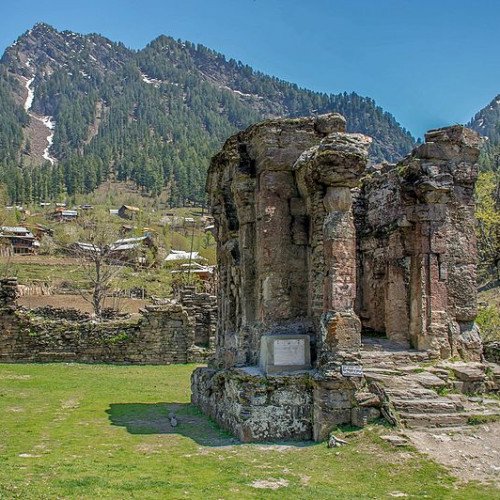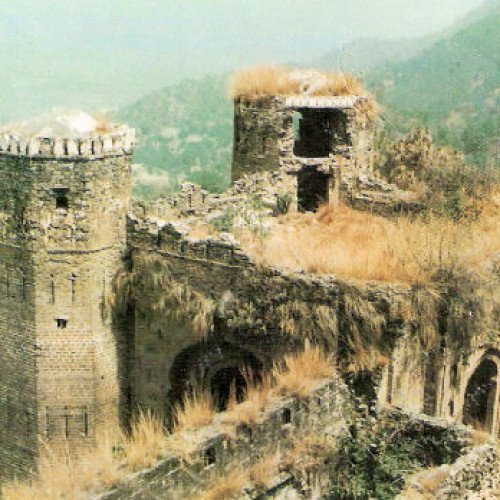Castles of "Pakistan" SHARADA PEETH vs BAGHSAR FORT

SHARADA PEETH
Sharada Peeth (IPA: SHAR-da PEETH; Urdu: شاردا پیٹھ; Kashmiri: شاردا پیٖٹھ (Nastaliq), शारदा पीठ (Devanagari), 𑆯𑆳𑆫𑆢𑆳 𑆥𑆵𑆜 (Sharada)) is a ruined Hindu temple and ancient centre of learning located in present-day Azad Jammu and Kashmir, Pakistan. Between the 6th and 12th centuries CE, it was among the most prominent temple universities in the Indian subcontinent. Known in particular for its library, stories recount scholars travelling long distances to access its texts. It played a key role in the development and popularisation of the Sharada script in North India, causing the script to be named after it, and Kashmir to acquire the moniker "Sharada Desh", meaning "country of Sharada". As one of the Maha Shakti Peethas, Hindus believe that it represents the spiritual location of the goddess Sati's fallen right hand. Sharada Peeth is one of the three holiest sites of pilgrimage for Kashmiri Pandits, alongside the Martand Sun Temple and the Amarnath Temple. Sharada Peeth is located approximately 150 kilometres (93 mi) from Muzaffarabad, the capital of Pakistani-administered Azad Kashmir, and 130 kilometres (81 mi) from Srinagar, the capital of Indian-administered Jammu and Kashmir. It is 10 kilometres (6.2 mi) away from the Line of Control, which divides the Pakistani- and Indian-controlled areas of the former princely state of Jammu and Kashmir. It is situated 1,981 metres (6,499 ft) above sea level, along the Neelum River in the village of Sharda, in the valley of Mount Harmukh, believed by Kashmiri Pandits to be the abode of Shiva.
Statistics for this Xoptio

BAGHSAR FORT
Baghsar Fort is an ancient fort built in Samahni Valley near Bhimber, Pakistan, close to a place known as Baghsar. The fort was constructed by Mughal rulers.[1] It is currently closed to visitors, due to it being right beside the line of control between Pakistan and India.